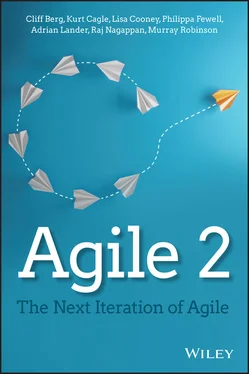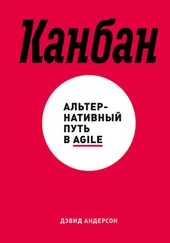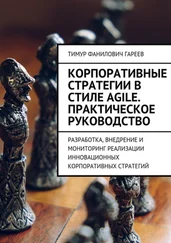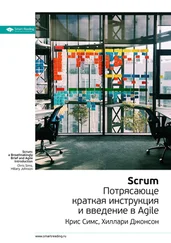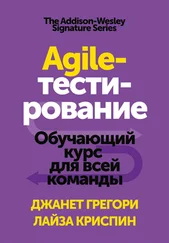In the weeks that followed, some of them continued the discussion by email and added 12 principles, which you can also find at the same website.
They called all this the Manifesto for Agile Software Development, and it came to be known colloquially as the Agile Manifesto or just Agile. This “manifesto” took the popular culture baton from XP and other iterative approaches and launched the Agile movement for real.
Extreme Programming had set the tone for what would become the Agile movement, and the tone was to be extreme. In those days, extreme was popular. We had extreme rock climbing, extreme skateboarding, extreme pogo, extreme skiing, and extreme pretty much anything. Extreme was in. People were so tired of the ordinary; everything new had to be extreme. It was a new millennium for crying out loud: everything needed a reset!
And so “extreme” was a necessary aspect of anything new and interesting at that moment in time in the late 1990s—the end of the 20 thcentury.
Since Agile was a rejection of what had become established software development methods, it was inherently a disruptive movement, and in the ethos of the time, it had to be extreme. And so it was that every Agile method that came to be proposed—these are called practices —were of necessity extreme. Otherwise, they were not seen to be consistent with the spirit of being entirely new and disruptive.
It was not the Agile Manifesto that set things in that direction. The Agile Manifesto was clearly about balance and moderation. It makes no absolute statements: every value is couched as a trade-off. For example, the first value reads, “[We have come to value] individuals and interactions over processes and tools.”
It does not say, “Forget process and tools—only pay attention to individuals and interactions.” Instead, it says, consider both, but pay special attention to individuals and interactions.
In other words, the Agile Manifesto advocated judgment and consideration of context. In that sense, it is a sophisticated document and cannot be used well by people who do not have the experience needed to apply judgment.
But the tone had already been set by XP: extreme practices received the most attention and applause, because XP practices were all extreme. For example, XP's recommendation of pair programming, in which two people sit together and write code together, sharing a keyboard, was considered by many programmers to be extreme. Or everyone sitting side by side in a single room, with all walls removed and no privacy—that was pretty extreme, as it had been assumed that people needed privacy to focus, and the big programmer complaint of the 1990s, depicted in so many Dilbert cartoons, was that programmers were no longer being given offices and instead were being sat in cubicles that did not afford enough quiet or privacy. And now here comes XP and says, in effect, You got it all wrong; you need to sit next to each other . That was an extreme swing of the pendulum.
The Scrum framework, which dates in various forms to the 1980s but became reformulated in 1993 and then popularized through its certification regime during the 2000s, 8 added more ideas that are arguably extreme. For example, Scrum views everyone on a team as an equal player—no one is acknowledged as having more standing than anyone else (“Scrum recognizes no titles for Development Team members” 9 ), regardless of their experience. That was pretty extreme, since before Agile, programmers in most (not all) organizations had professional levels, such as programmer, senior programmer, architect, etc.
During the first decade of the Agile movement it seemed that new suggested practices were in a competition to be more extreme than the others. We saw the introduction of mob programming, in which rather than two programmers working together as in pair programming, the entire team works together—literally—everyone calling out their thoughts in a single room and sharing a single keyboard. 10 Then in 2015 the Agile team room was extended by Facebook to an extreme level when it created its 430,000-square-foot open team room. 11
We also saw the growth of conference formats pushing popular Agile practices to the extreme—for example, the Lean Coffee format in which there is no agenda or the “unconference” and Open Space formats in which people vote on topics and join ad hoc conversations. These contrast strongly with a traditional conference or discussion group format, which generally has an agenda and scheduled talks, with informal sessions afterward.
But do extremes work?
Certainly they work for something . There is always some use for any tool. The question is, are the extreme practices advocated by many among the Agile community actually the most effective method for a wide range of situations that commonly occur in organizations? Another question is, do these practices favor certain ways of working at the expense of others so that certain people benefit but others are at a disadvantage? Or, should a thoughtful approach be used, with moderate approaches being the norm and extreme approaches used sparingly and when a particular form of activity is desired for a specific reason?
Since the Agile movement began through advocacy of extremes and was inherently a disruptive movement, it became evangelistic, and dogmatic elements arose. As a result, if one did not embrace the trending favored set of Agile practices, one was at risk of being labeled an “Agile doubter.” That label was brandished readily by many Agile coaches. And so extremes came to be not just something to consider, but the way—and the only way. Agile was now something to accept on faith; as Kurt Cagle had written, it had become a religion.
Whenever something new and useful is created, people and organizations jump in to claim it and use it for their own purposes. Any change creates huge opportunities. For example, when Howard Head came out with the oversized Prince tennis racquet in the early 1970s, other manufacturers followed Head's lead and came out with racquets that departed from the standard size. One suddenly saw racquets on the market with very large nets and also ones that were only slightly larger than what was then the standard size.
The ones that were slightly larger became the most popular and came to be seen as the new standard size. These were called “midsize” racquets, although today we just call them racquets. 12
The inevitable result was that everyone who owned a tennis racquet had to go out and buy a new one; otherwise, they were not adhering to the new “standard.” The sports equipment industry experienced a windfall in sales.
The rise of Agile did the same thing. There were new books, new websites, new consulting practices, and new frameworks that purported to be Agile. Agile quickly became a commodity to sell. It began with an Agile certification industry. Ken Schwaber introduced a two-day certification course for his Scrum framework: the Certified Scrum Master, aka CSM. By sitting in a training room for two days and not even taking a test (they do provide a simple test now), one could walk away with a certificate claiming to be a “master.”
Essentially the material that could be contained in a small pamphlet was the basis of what Human Resources staff and many hiring managers erroneously interpreted as a “master-level” certification.
Since Schwaber and his partner, Jeff Sutherland, claimed that Scrum was an Agile framework, it was something they could sell under the rising banner of Agile. Organizations that preferred to hire people with certifications made the CSM a requirement. People who had master's degrees from universities were dismayed at the naively perceived equivalence of a master's degree and a Certified Scrum Master certification. Highly qualified people were screened from job applications because they did not have the two-day CSM certification.
Читать дальше
